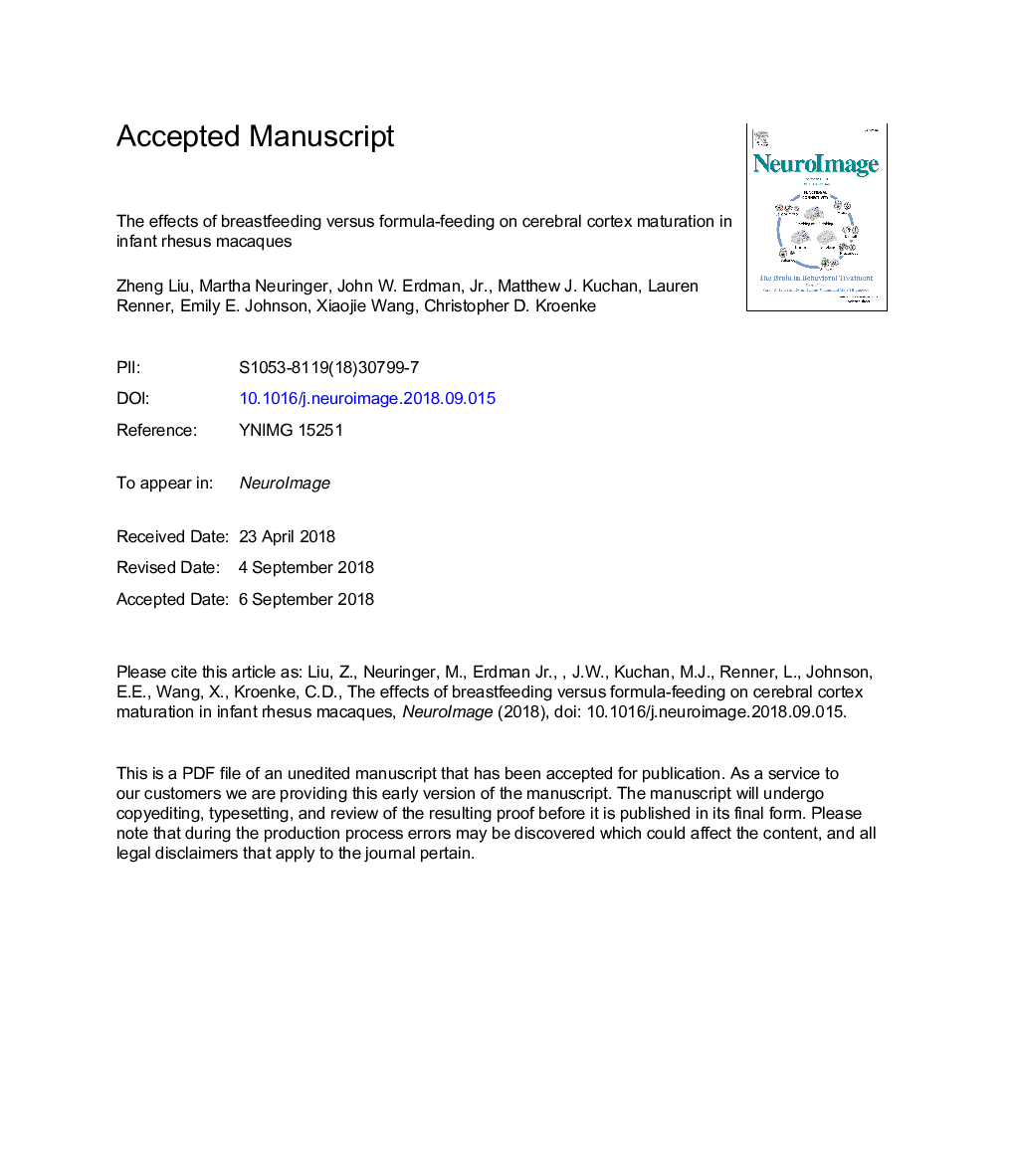| کد مقاله | کد نشریه | سال انتشار | مقاله انگلیسی | نسخه تمام متن |
|---|---|---|---|---|
| 10215584 | 1678892 | 2019 | 43 صفحه PDF | دانلود رایگان |
عنوان انگلیسی مقاله ISI
The effects of breastfeeding versus formula-feeding on cerebral cortex maturation in infant rhesus macaques
ترجمه فارسی عنوان
اثرات تغذیه با شیر مادر در مقابل فرمول تغذیه بر بلوغ مغزی مغزی در مادربزرگهای پرورش نوزادان
دانلود مقاله + سفارش ترجمه
دانلود مقاله ISI انگلیسی
رایگان برای ایرانیان
موضوعات مرتبط
علوم زیستی و بیوفناوری
علم عصب شناسی
علوم اعصاب شناختی
چکیده انگلیسی
Breastfeeding is positively associated with several outcomes reflecting early brain development and cognitive functioning. Brain neuroimaging studies have shown that exclusively breastfed children have increased white matter and subcortical gray matter volume compared to formula-fed children. However, it is difficult to disentangle the effects of nutrition in breast milk from other confounding factors that affect brain development, particularly in studies of human subjects. Among the nutrients provided by human breast milk are the carotenoid lutein and the natural form of tocopherol, both of which are selectively deposited in brain. Lutein is the predominant carotenoid in breast milk but not in most infant formulas, whereas infant formulas are supplemented with the synthetic form of tocopherol. In this study, a non-human primate model was used to investigate the effects of breastfeeding versus formula-feeding, as well as lutein and natural RRR-α-tocopherol supplementation of infant formula, on brain maturation under controlled experimental conditions. Infant rhesus macaques (Macaca mulatta) were exclusively breastfed, or were fed infant formulas with different levels and sources of lutein and α-tocopherol. Of note, the breastfed group were mother-reared whereas the formula-fed infants were nursery-reared. Brain structural and diffusion MR images were collected, and brain T2 was measured, at two, four and six months of age. The mother-reared breastfed group was observed to differ from the formula-fed groups by possessing higher diffusion fractional anisotropy (FA) in the corpus callosum, and lower FA in the cerebral cortex at four and six months of age. Cortical regions exhibiting the largest differences include primary motor, premotor, lateral prefrontal, and inferior temporal cortices. No differences were found between the formula groups. Although this study did not identify a nutritional component of breast milk that could be provided to infant formula to facilitate brain maturation consistent with that observed in breastfed animals, our findings indicate that breastfeeding promoted maturation of the corpus callosum and cerebral cortical gray matter in the absence of several confounding factors that affect studies in human infants. However, differences in rearing experience remain as a potential contributor to brain structural differences between breastfed and formula fed infants.
ناشر
Database: Elsevier - ScienceDirect (ساینس دایرکت)
Journal: NeuroImage - Volume 184, 1 January 2019, Pages 372-385
Journal: NeuroImage - Volume 184, 1 January 2019, Pages 372-385
نویسندگان
Zheng Liu, Martha Neuringer, John W. Jr., Matthew J. Kuchan, Lauren Renner, Emily E. Johnson, Xiaojie Wang, Christopher D. Kroenke,
